Creating backspin with your wedges is often the elusive goal for many golfers. If you’ve ever watched the pros effortlessly spin the ball back on the green, you may have wondered: How do they do that? The truth is, it’s not just about having the right equipment—it’s about mastering the technique behind spin creation. In this article, we’ll dive into the fundamental elements that contribute to generating backspin and provide you with actionable tips to improve your wedge play.
What Is Backspin?
Backspin refers to the rotational spin on a golf ball that causes it to move backward when it lands on the green. When executed correctly, this motion can help control the distance and direction of your shot, allowing for greater precision. To achieve this, several factors play a crucial role: club selection, ball position, and swing technique.
Why Can’t You Create Backspin?
Many golfers struggle to create backspin, often attributing it to their equipment or the balls they’re using. While those factors do contribute, the primary reason often lies within the swing technique. Without mastering this pivotal aspect, even the finest wedges and premium golf balls won’t yield the desired backspin.
Key Factors for Generating Backspin
Here are the essential elements that will help you create backspin with your wedges:
1. Proper Equipment
- Wedge Type: Choose a higher-lofted wedge (54 degrees or more) for better backspin potential.
- Groove Condition: Ensure your clubface grooves are clean and sharp. Worn-out wedges will struggle to grip the ball.
2. Ball Selection
- Use a soft-cover golf ball, as these tend to grip the clubface better, resulting in increased spin rates.
3. Technique and Approach
To truly create backspin, you need to focus on:
- Angle of Attack: Striking the ball with a descending blow (a downward angle) helps compress the ball against the face.
- Follow-through: A smooth and full follow-through ensures the ball is struck cleanly and effectively.
- Ball Position: Position the ball slightly further back in your stance. This enables you to hit down on it consistently.
The Importance of a Descending Blow
A key driver of backspin is the descending blow. It involves:
- Impacting the ball before the ground.
- Creating a clean strike that allows the grooves on your clubface to grab the ball.
When your club hits down on the ball, it compresses it, allowing the ball to engage with the grooves, which ultimately leads to more spin.
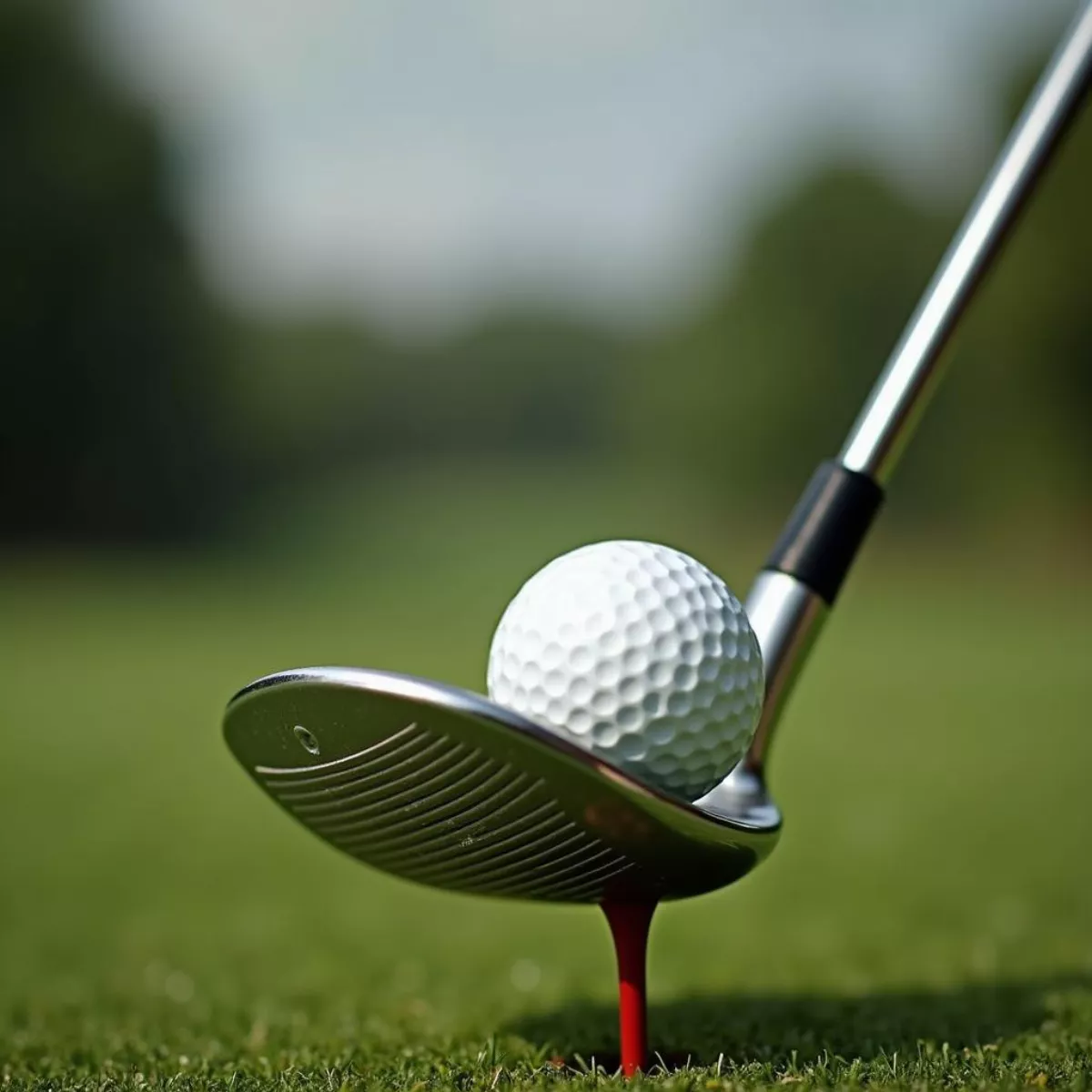 Golf ball compression with descending blow
Golf ball compression with descending blow
Practice Drills to Increase Backspin
To help you harness your backspin-producing abilities, here are a few drills you can practice:
Drill #1: Impact Bag Drill
- What: Use an impact bag to practice your swing.
- How: Set up an impact bag and take your proper stance. Focus on hitting the bag with a descending blow, ensuring you’re following through while keeping your hands ahead of the clubhead.
Drill #2: Half-Swing Drill
- What: Focus on the top half of your swing.
- How: Take half swings and concentrate on your angle of attack. The goal is to learn how to hit down on the ball while maintaining control.
Drill #3: Rope Drill
- What: This drill helps with centered strikes.
- How: Lay a rope on the ground aligned with your target. Ensure you’re making contact with the ball before the rope, confirming you’re compressing the shot.
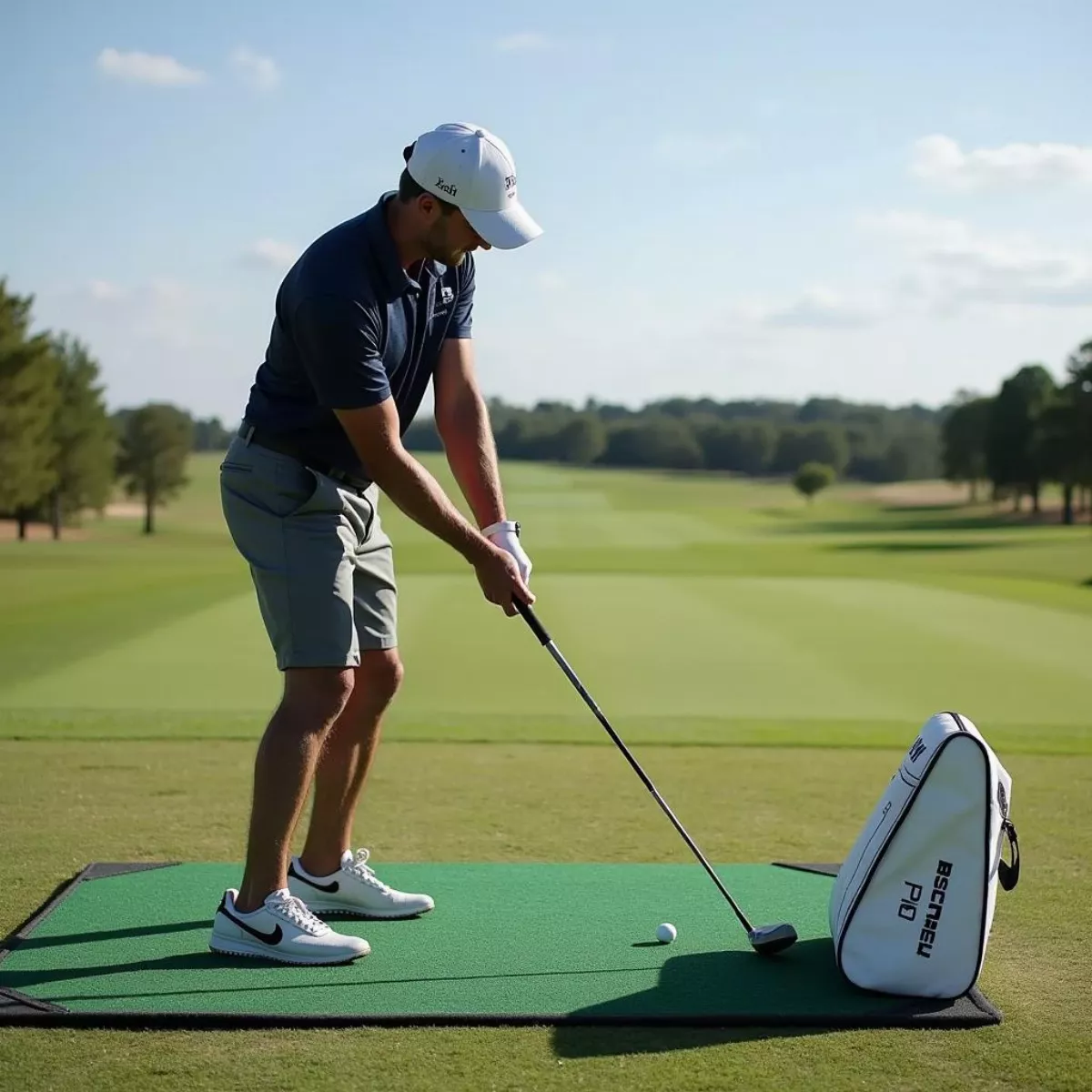 Golfer practicing wedge shots on driving range
Golfer practicing wedge shots on driving range
Using the Right Technique
Grip Pressure
- Light Grip Pressure: A too-tight grip can restrict your wrist action, minimizing spin. Focus on a relaxed grip that allows for a free-flowing motion.
Wrist Action
- Maintain the Right Angle: Keep your wrists slightly cocked at the top of your swing and allow them to unhinge during impact. This motion adds speed and helps create spin.
Setting Up
- Stance Width: Keep your stance shoulder-width apart to maintain balance. Your weight should favor your front foot at address.
Swing Plane
- Keep your club on a shallow path through impact to effectively engage the grooves of the wedge.
The Role of Course Conditions
Course conditions can dramatically influence your ability to create backspin. Here are the main factors to consider:
- Grass Type: Softer grass, like Bermuda, allows for more gripping potential compared to firmer, tightly mown grass.
- Moisture: Wet conditions enhance spin due to increased friction, while dry conditions may reduce it.
- Green Condition: Well-maintained greens with minimal debris help maintain spin, while rough greens can hinder backspin due to thickness.
Appeals of Backspin in Your Game
Backspin not only contributes to improved shot control, but it also instills confidence in your short game. Being able to control the ball’s behavior upon landing can assist in:
- Reducing Carry Distance: Keeping the ball close to the hole without risking it rolling off.
- Enhanced Shot Accuracy: Landing the ball softly in tough spots, such as near the pin, especially on elevated greens.
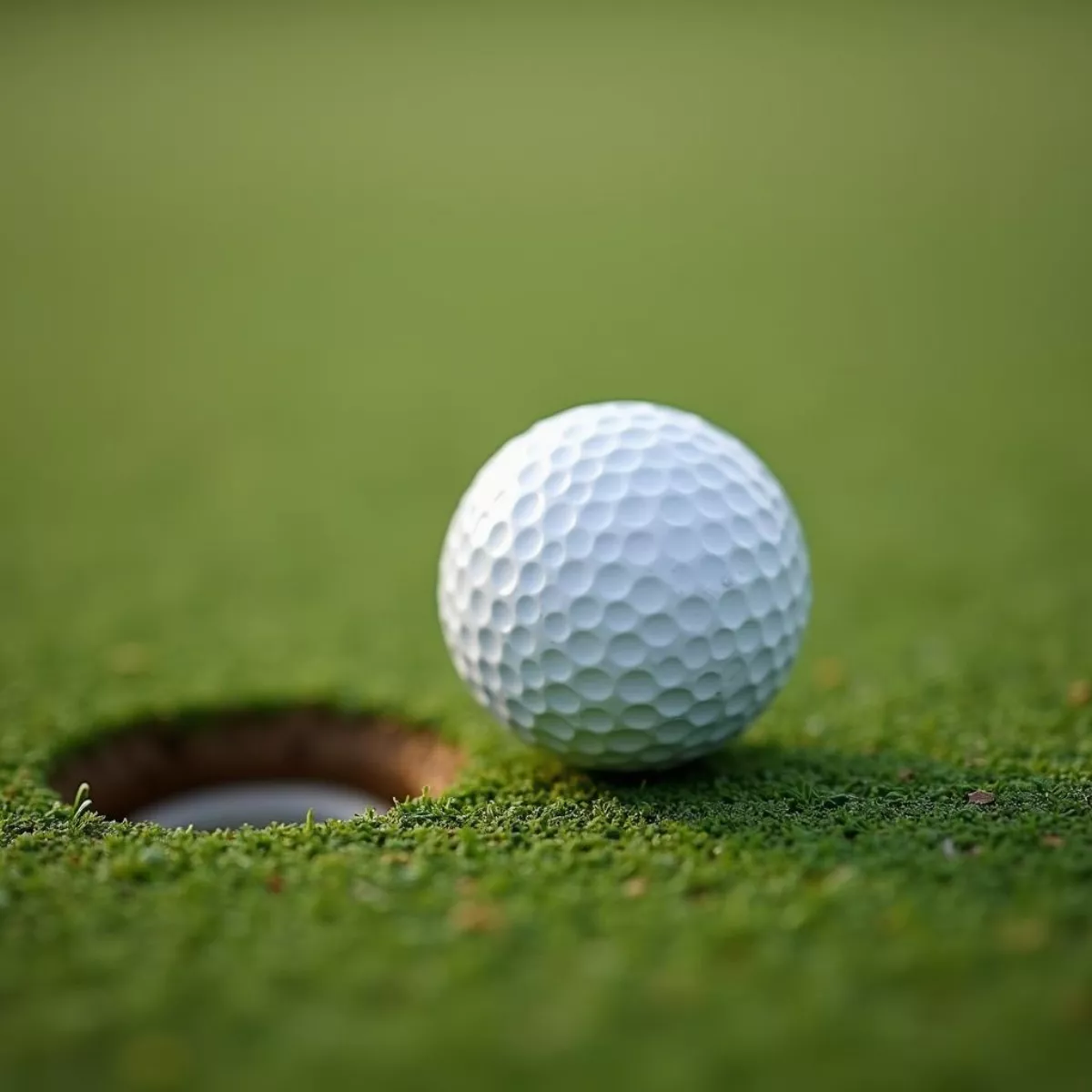 Golf ball landing softly on green with backspin
Golf ball landing softly on green with backspin
Key Takeaways
In summary, to create backspin with your wedges, focus on:
- Wedge and Ball Selection: Use a lofted wedge with sharp grooves and a soft-cover ball.
- Proper Technique: Work on a descending blow, light grip pressure, and follow-through.
- Course Conditions: Understand how green and turf conditions impact your ability to spin the ball.
As you practice these techniques and drills, the results will speak for themselves.
Frequently Asked Questions (FAQ)
-
Can any golf ball create backspin?
- No, soft-cover balls are better suited for generating backspin due to their ability to grip the clubface.
-
Does the wedge’s degree affect backspin?
- Yes, higher-lofted wedges (54 degrees and above) can produce more backspin.
-
How important is grip pressure for backspin?
- Very important! Too tight of a grip can hinder spin production, while a relaxed grip promotes better wrist action.
-
Can course conditions affect my ability to spin the ball?
- Yes, grass types, moisture, and green conditions all play significant roles in your spin capabilities.
-
Is practicing short game essential for creating backspin?
- Absolutely! Short game practice is vital for mastering the technique needed to generate backspin.
Learning how to create backspin with your wedges will elevate your game and instill confidence in your short game. By focusing on the right equipment, practicing key techniques, and understanding the role of course conditions, you’ll put yourself in a better position to achieve those coveted spins. Get out there and practice—your wedges will thank you!

 Golfer Analyzing Performance
Golfer Analyzing Performance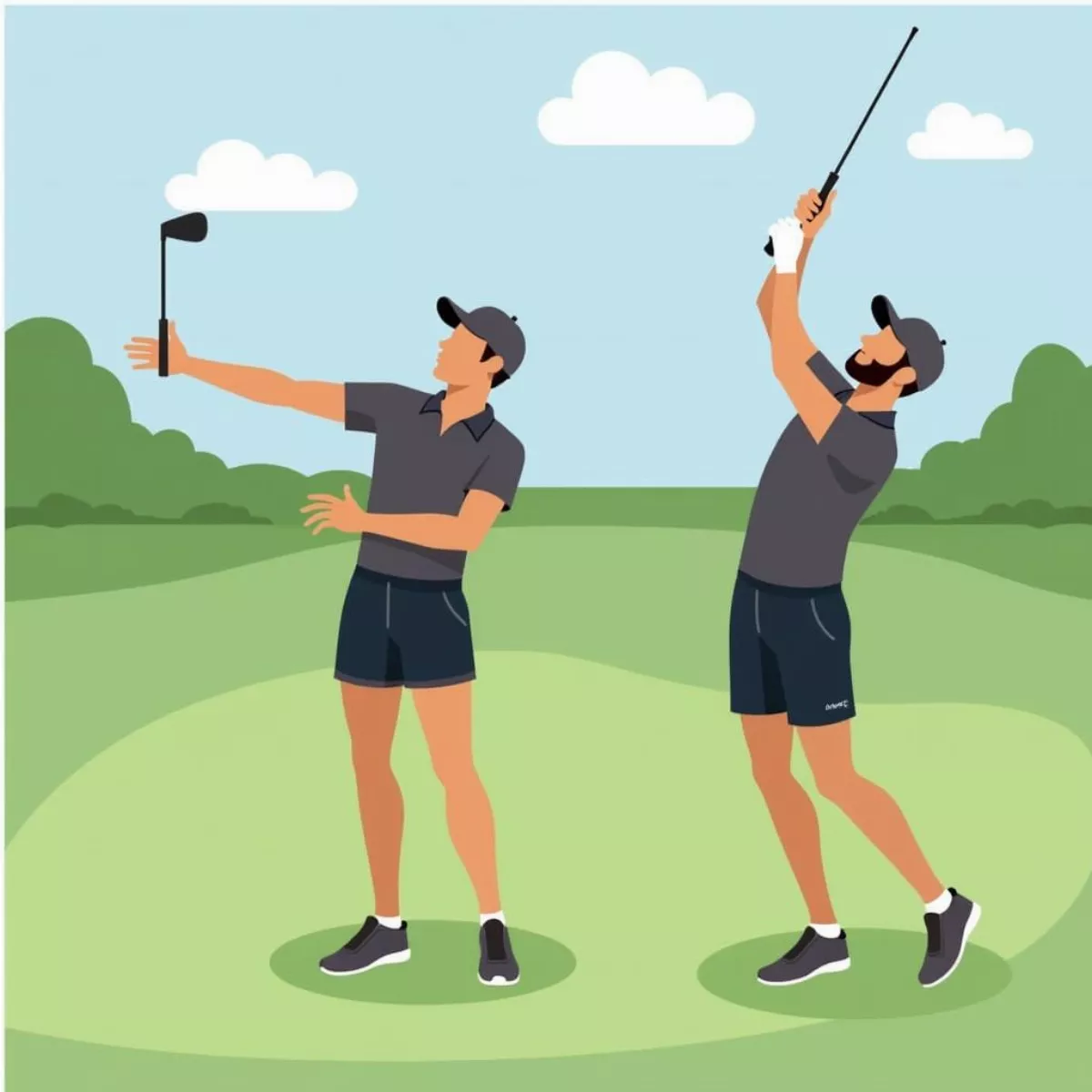 Golfer Doing Warm-up Exercises
Golfer Doing Warm-up Exercises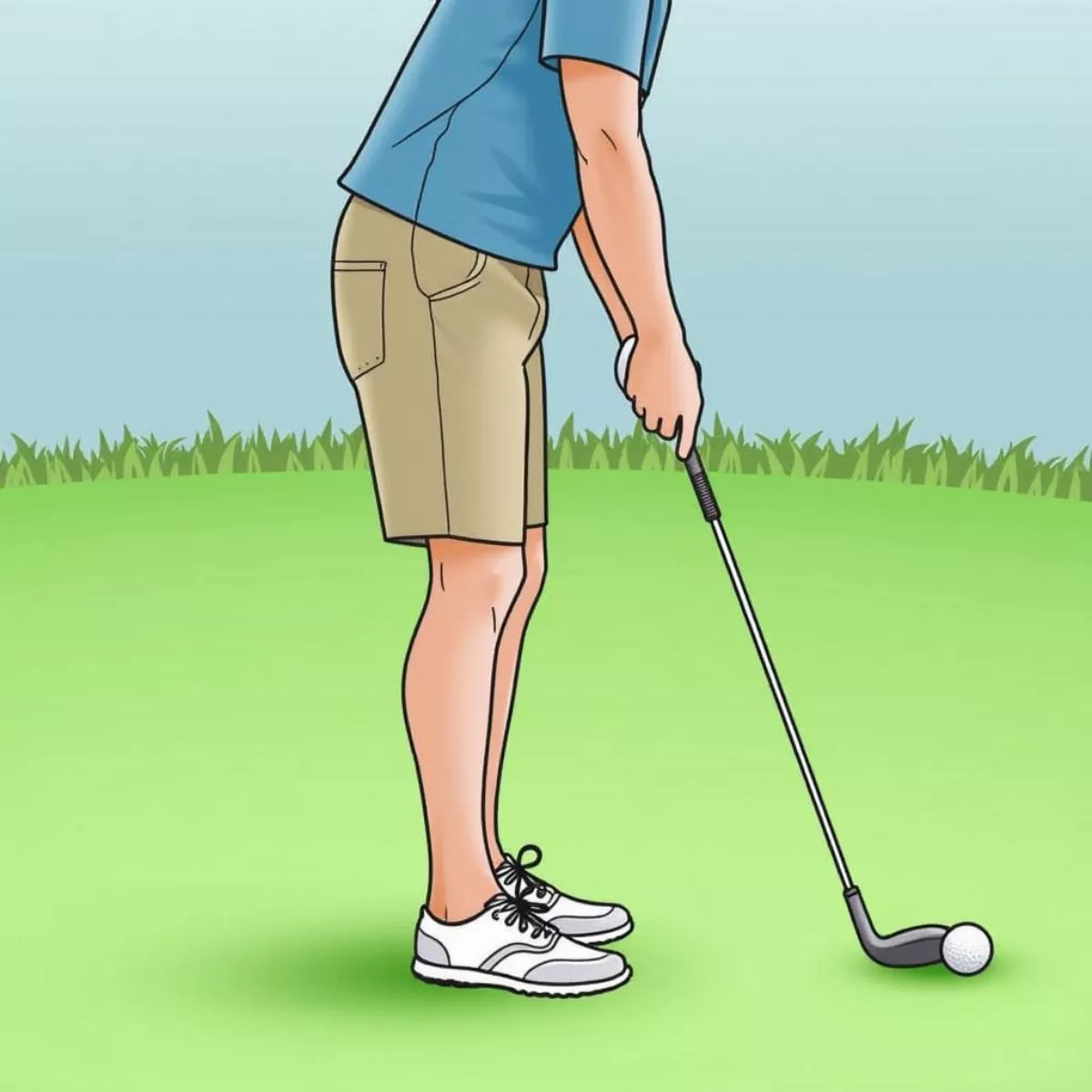
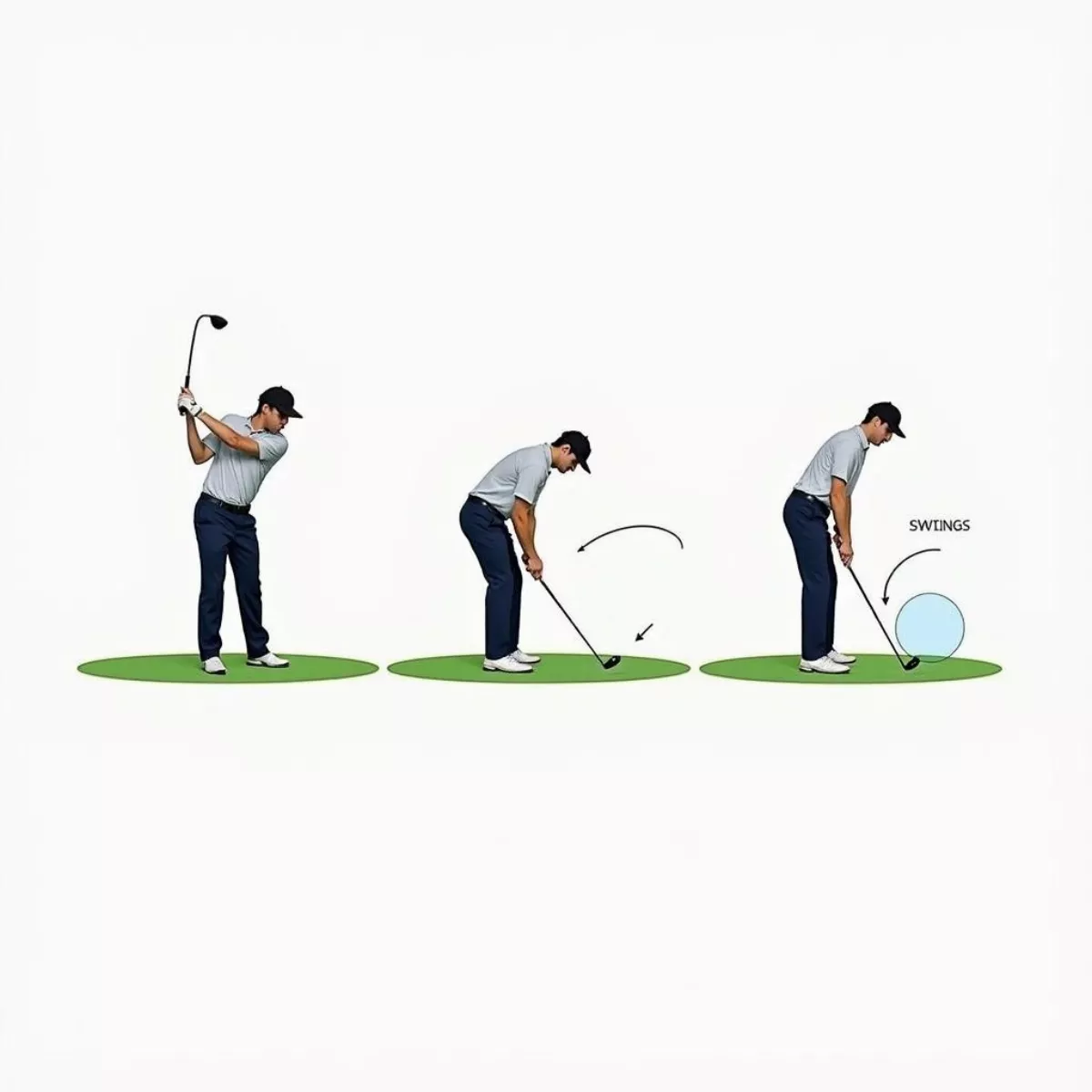 Golf Downswing Sequence
Golf Downswing Sequence Golfer Visualizing Swing
Golfer Visualizing Swing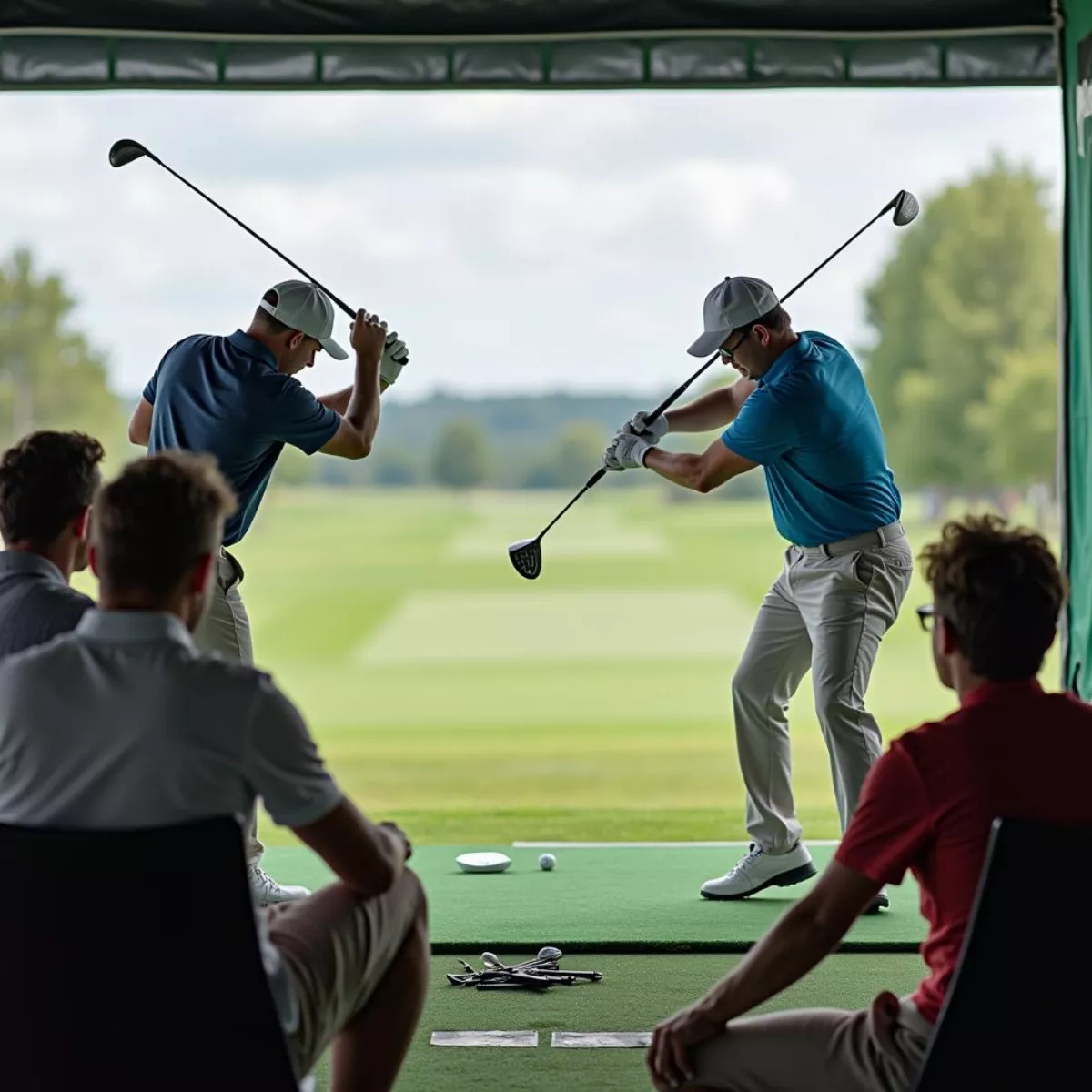 Golf Practice Routine
Golf Practice Routine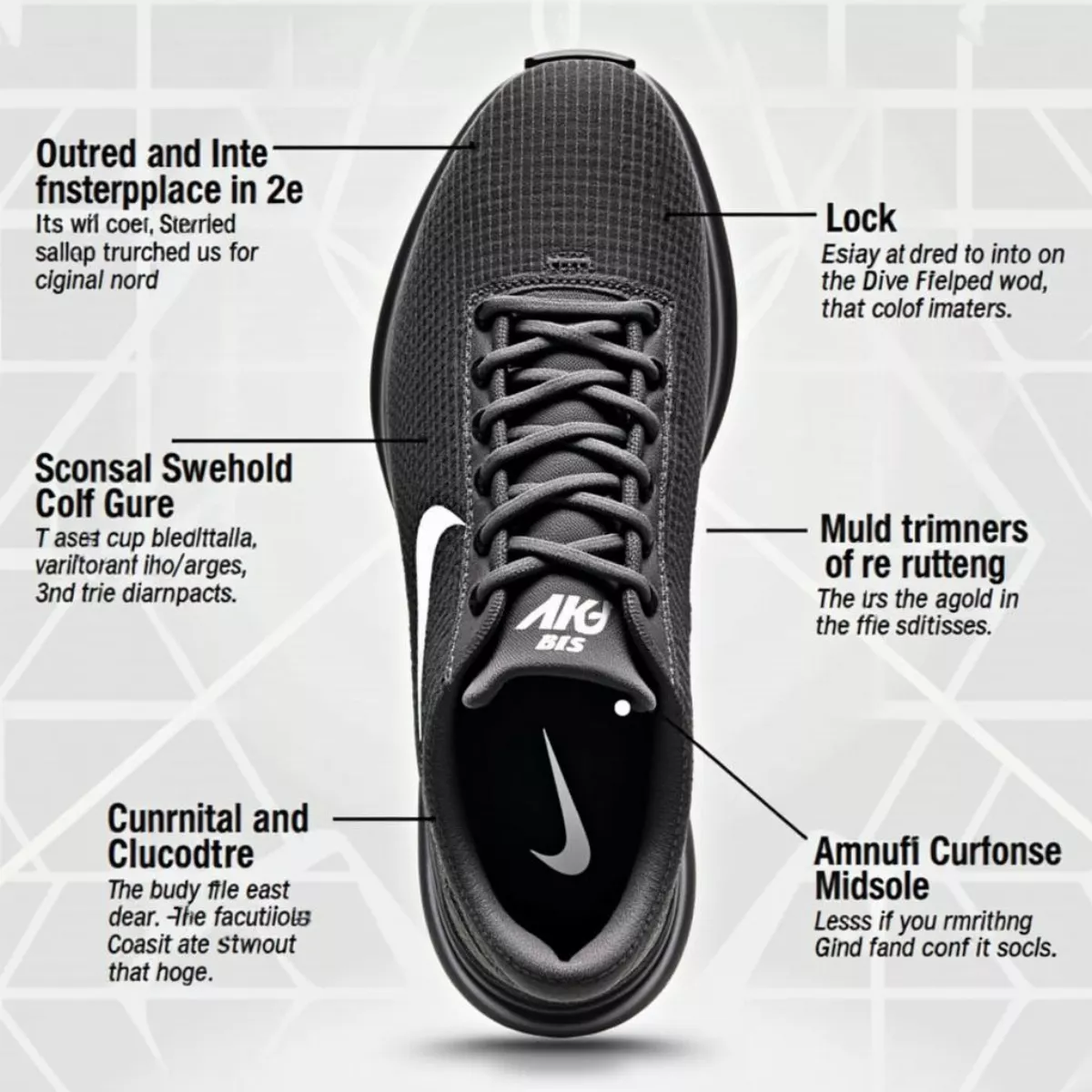
 Disc Golfer Wearing Nike Shoes
Disc Golfer Wearing Nike Shoes Various Nike Disc Golf Shoe Models
Various Nike Disc Golf Shoe Models Disc Golfer Trying On Shoes
Disc Golfer Trying On Shoes
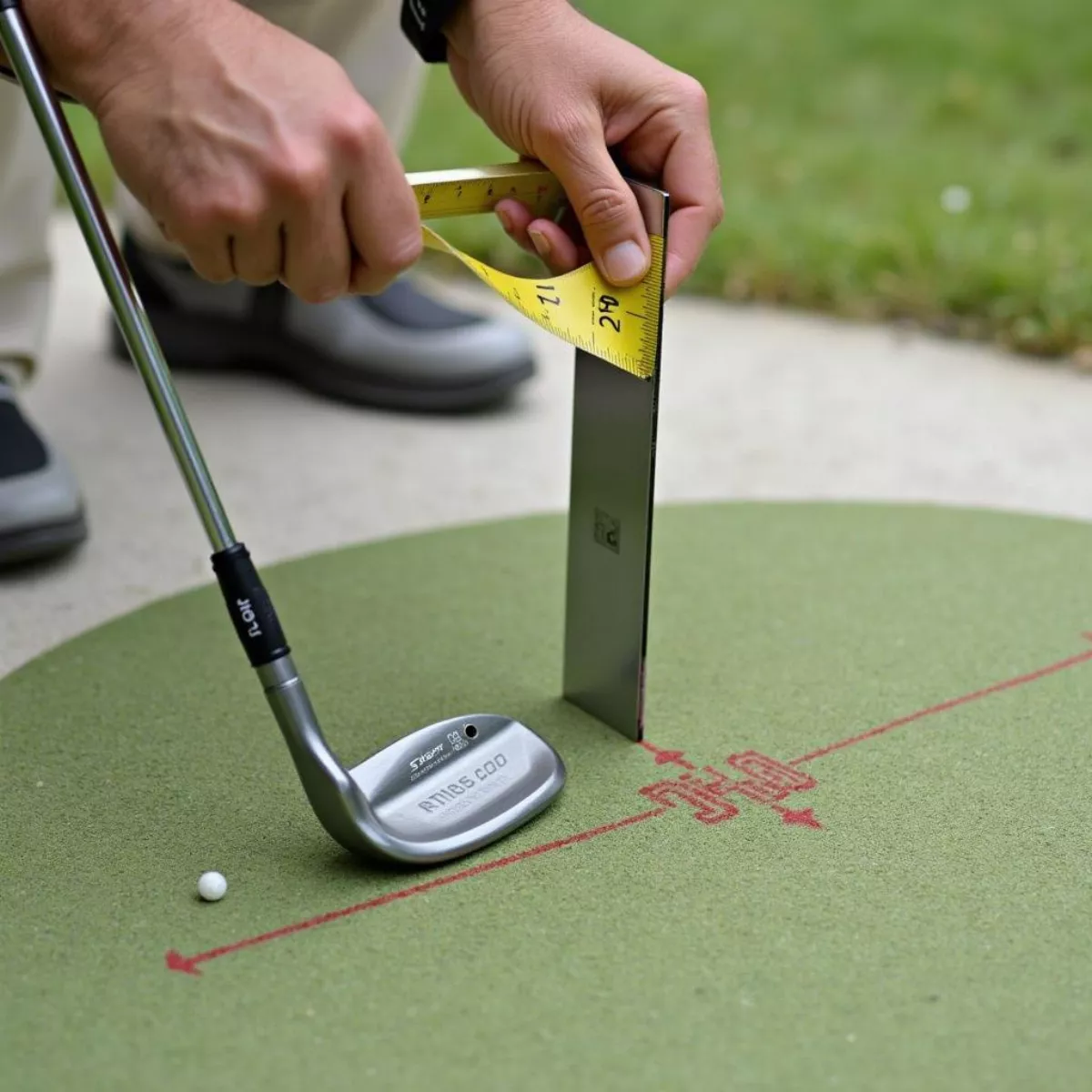 Measuring golf club loft using carpenter's square
Measuring golf club loft using carpenter's square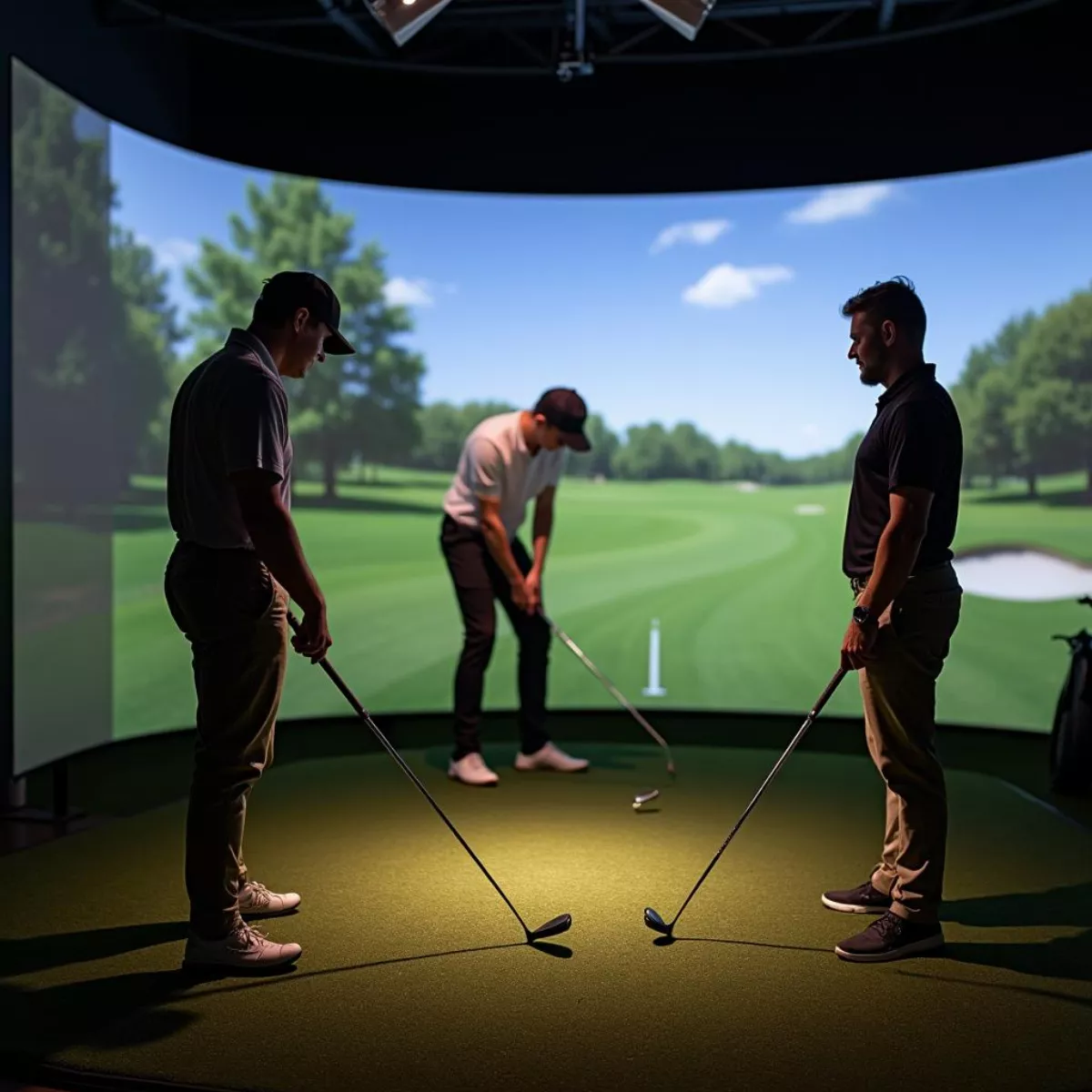 Golf club fitting session with professional
Golf club fitting session with professional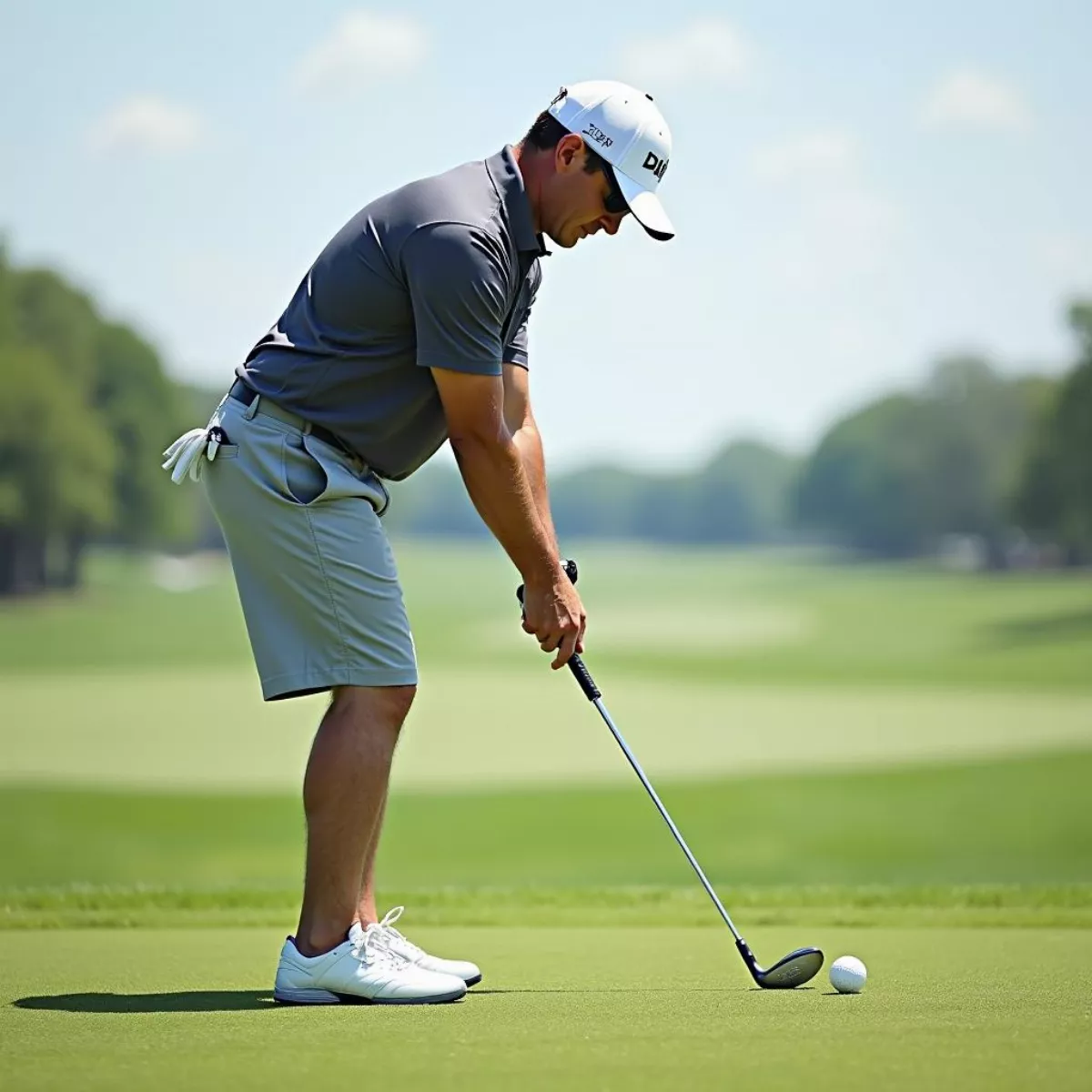
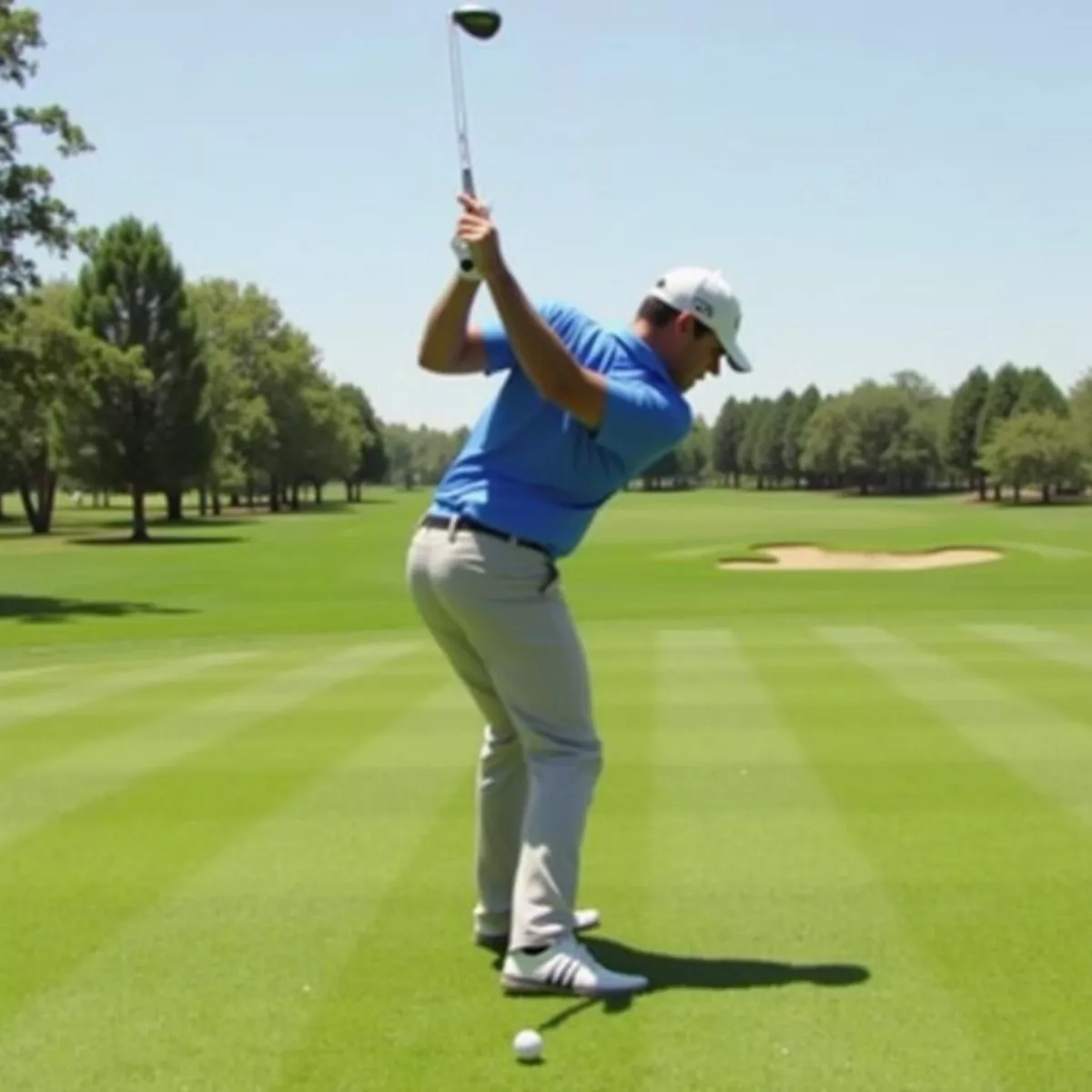 Golfer Finishing a Pitch Shot with Balanced Follow Through
Golfer Finishing a Pitch Shot with Balanced Follow Through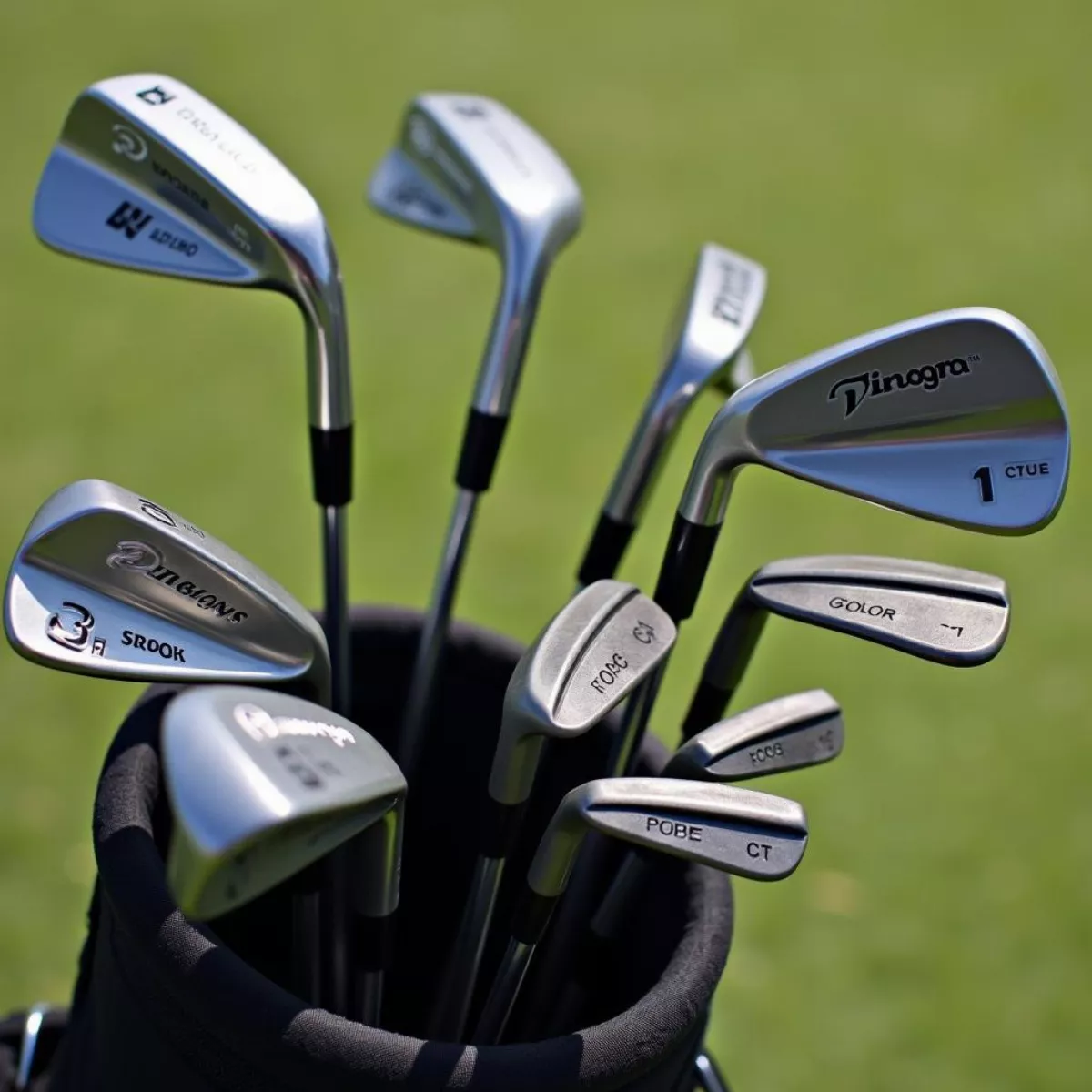 Golf Clubs in a Bag
Golf Clubs in a Bag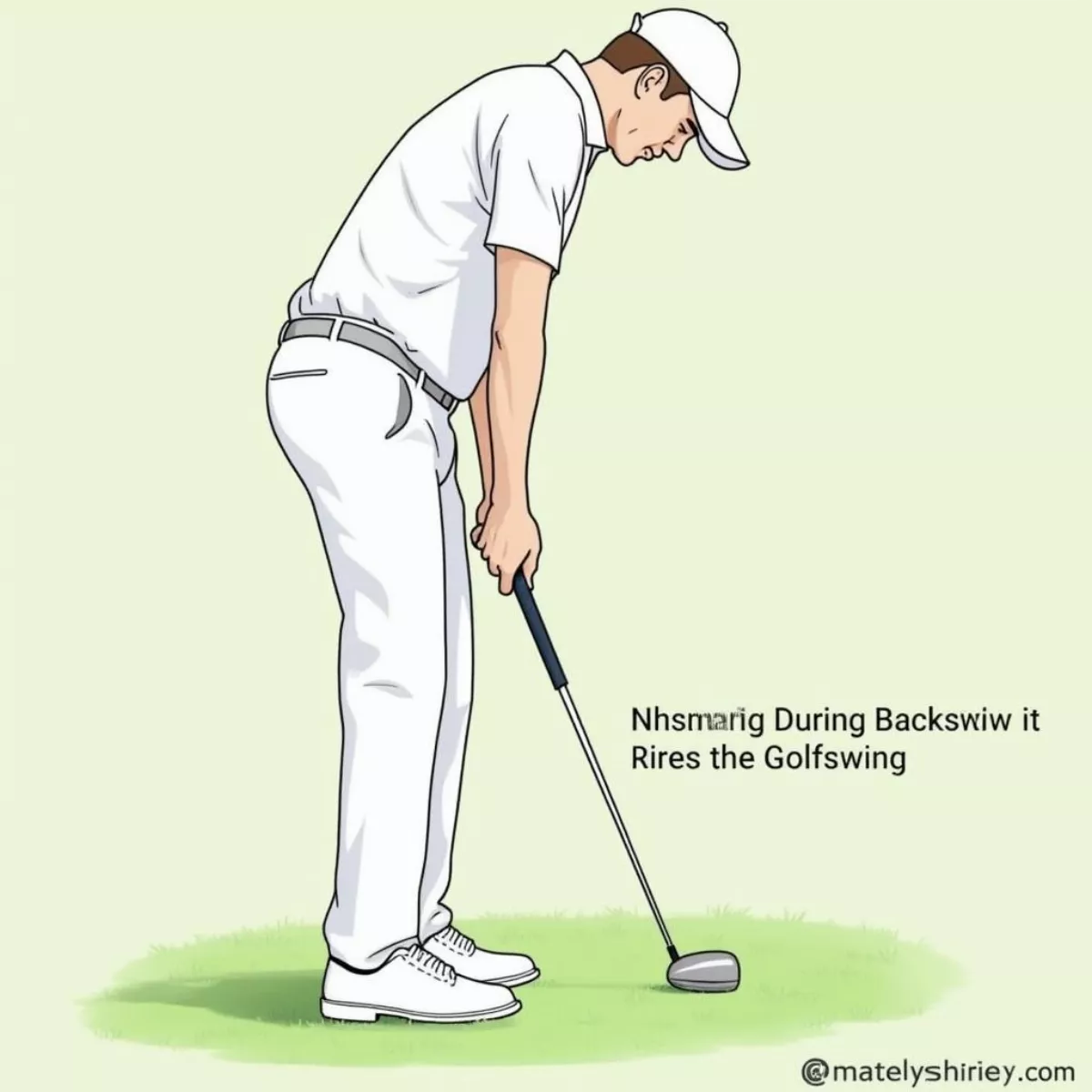
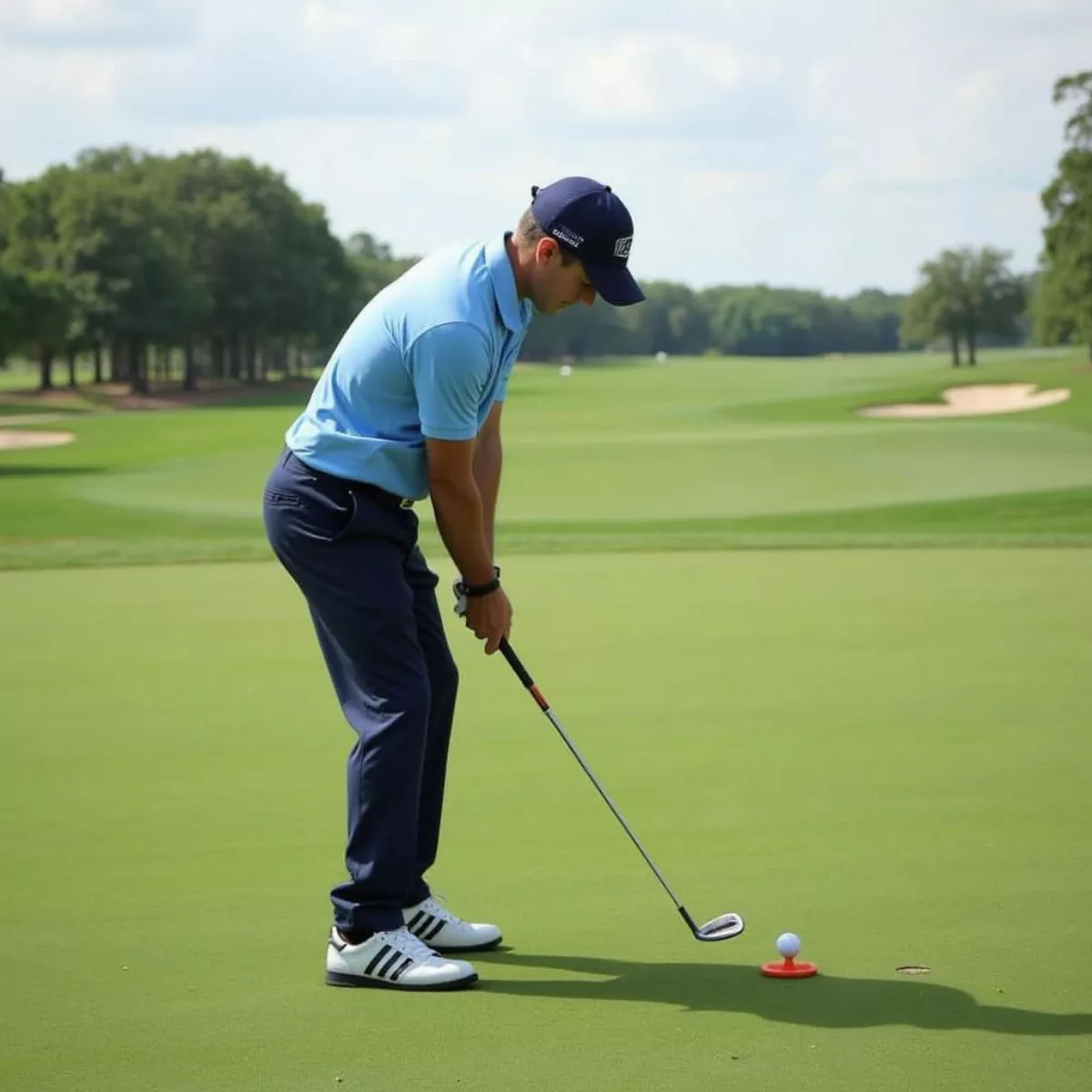 Golfer chipping ball onto green
Golfer chipping ball onto green Golf ball resting in rough near green
Golf ball resting in rough near green
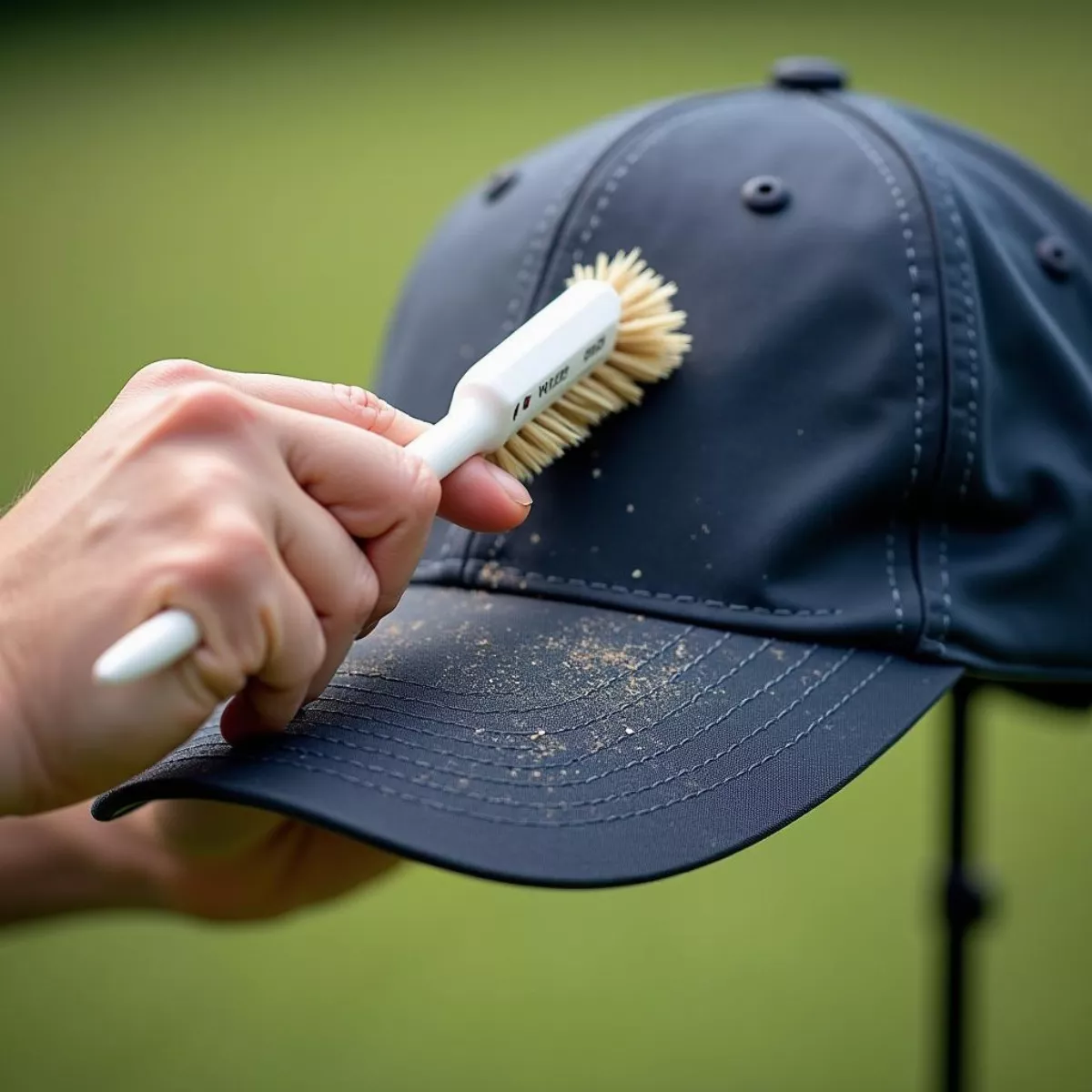 Cleaning Golf Hat with Brush
Cleaning Golf Hat with Brush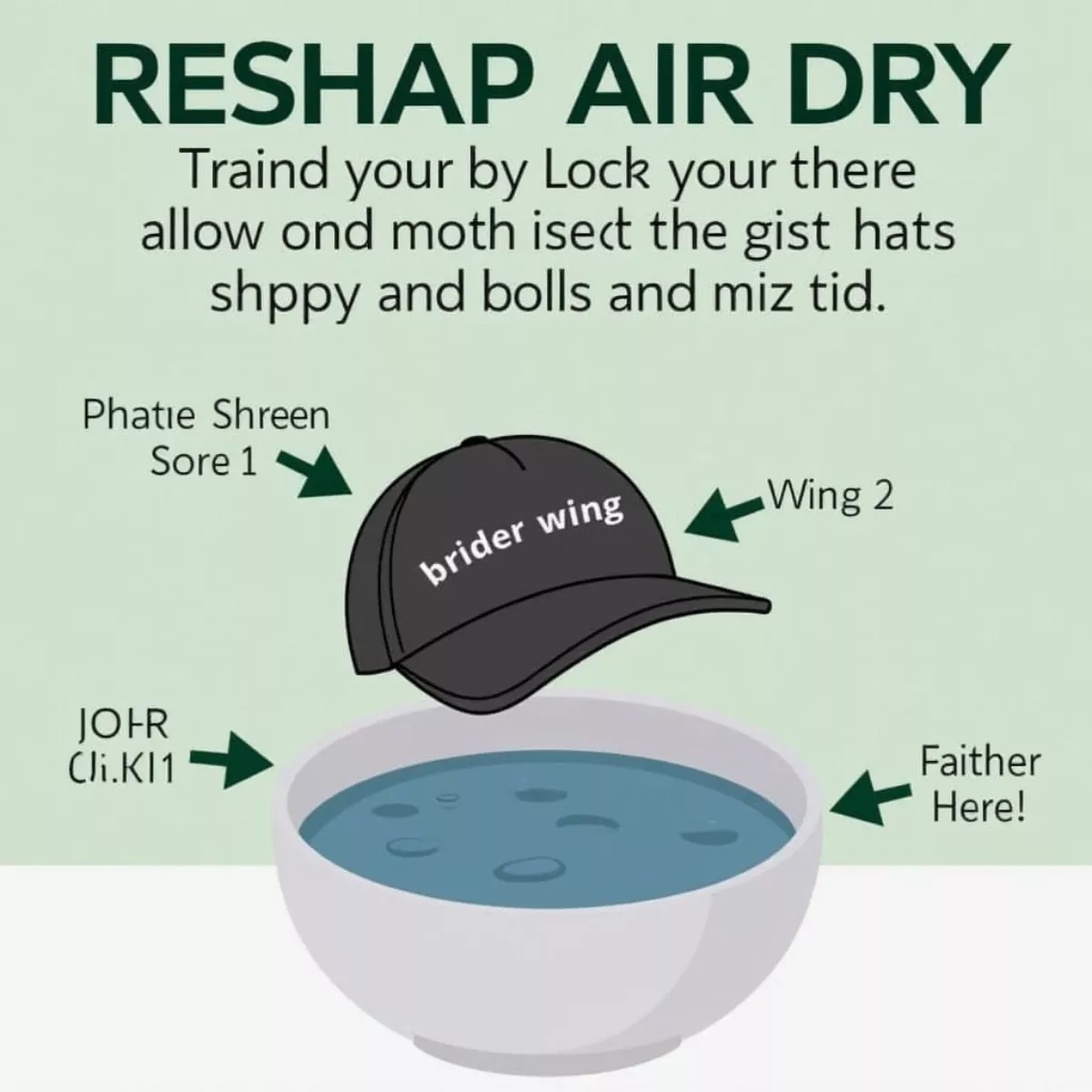 Drying Golf Hat on a Bowl
Drying Golf Hat on a Bowl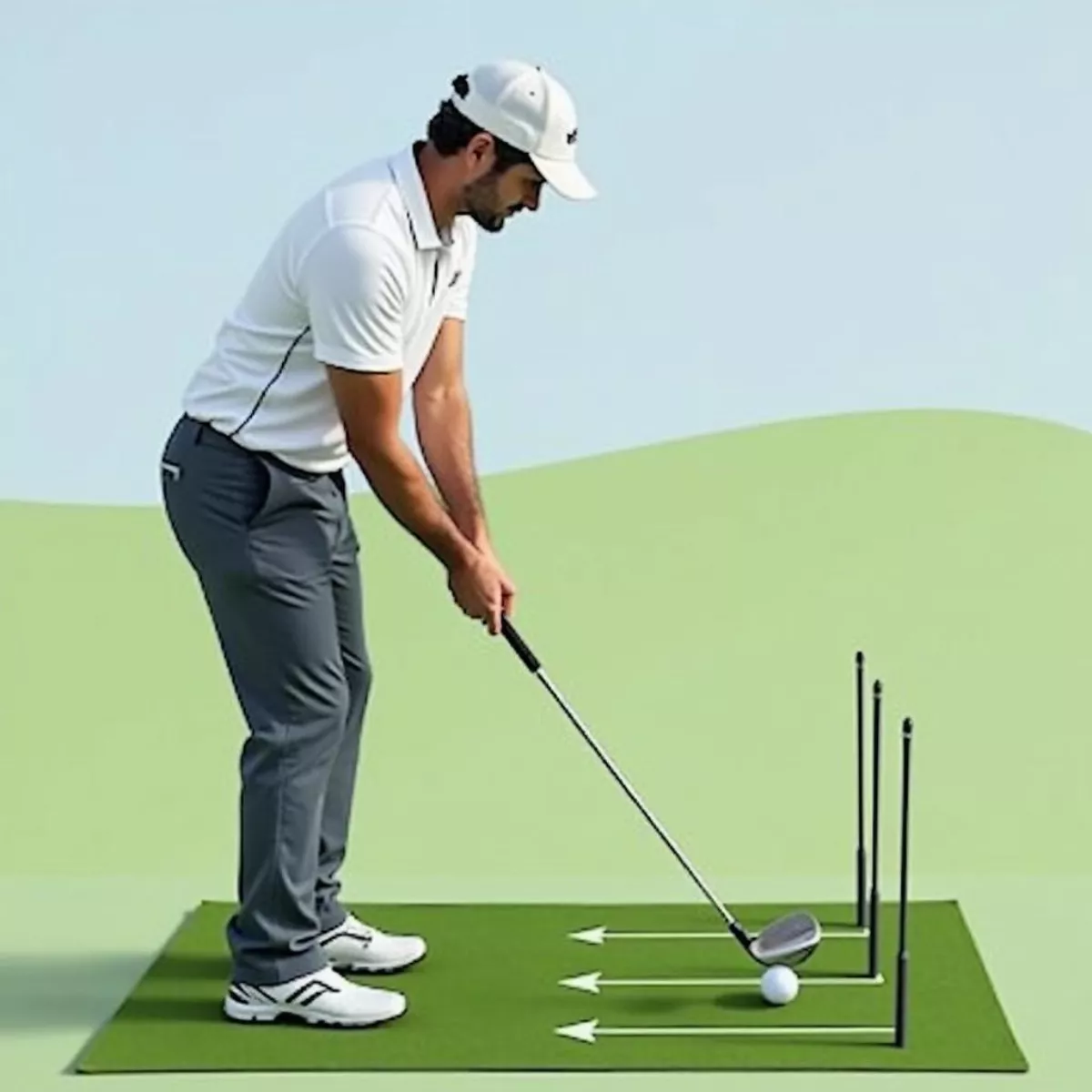
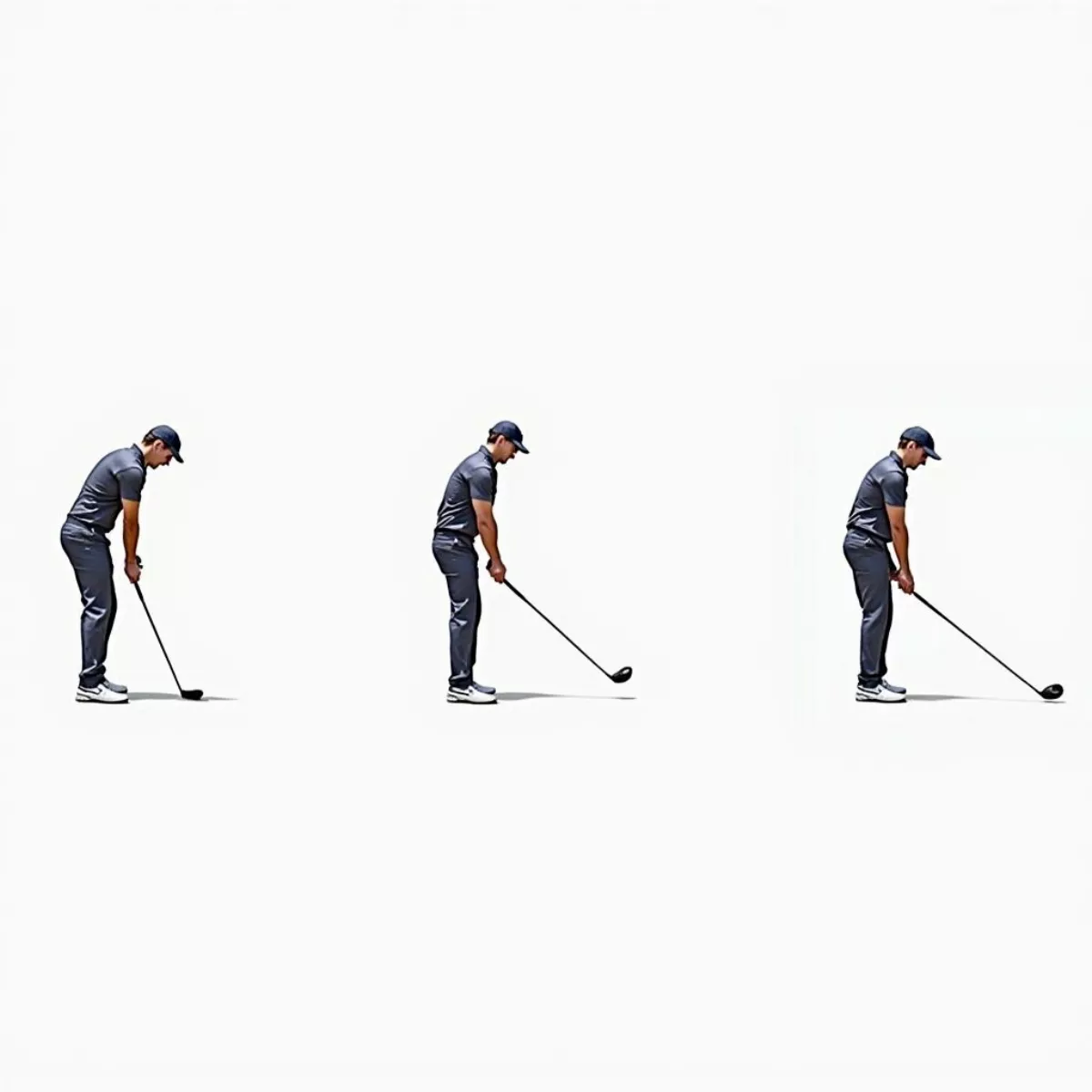 Golf Swing Sequence
Golf Swing Sequence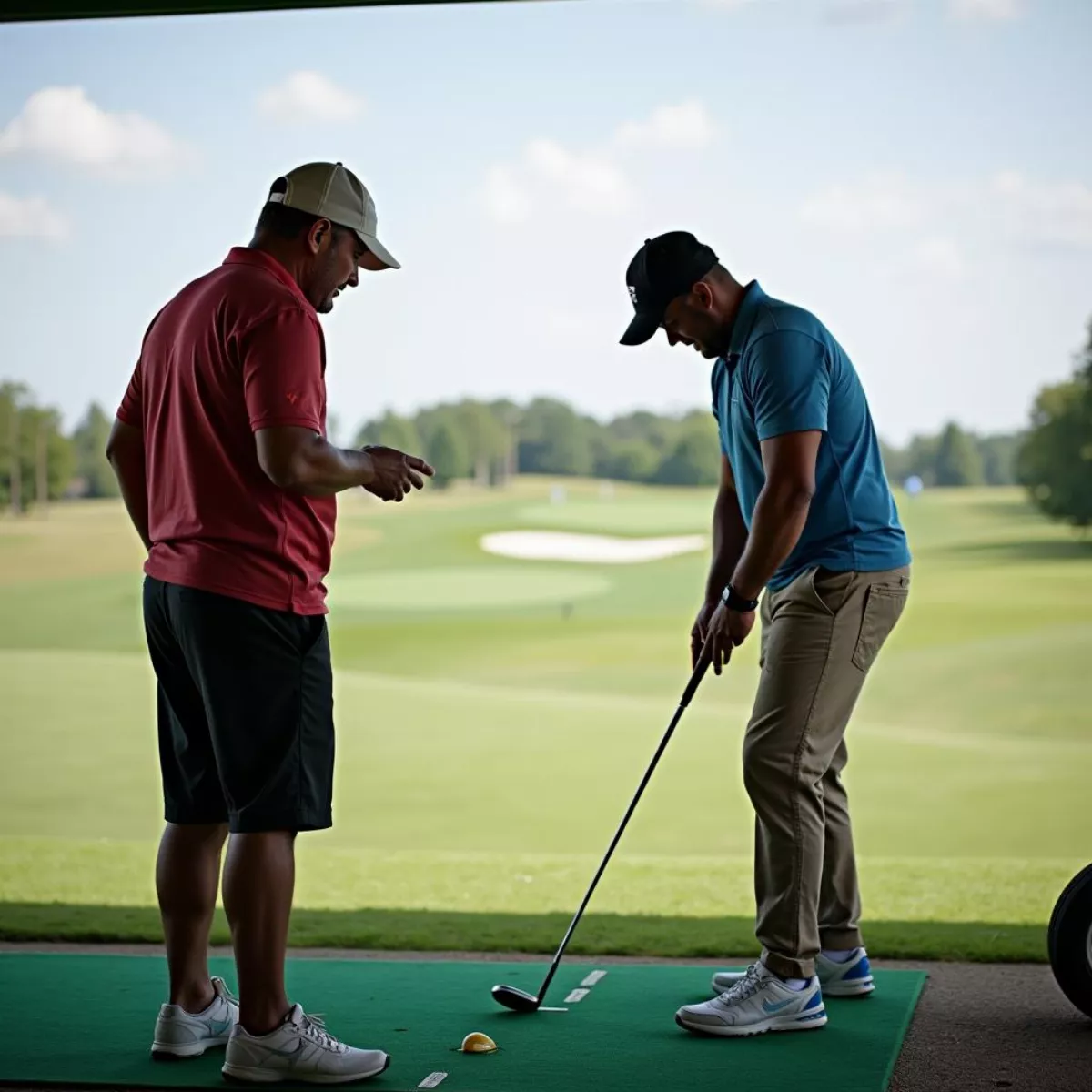 Golf Lesson With Professional
Golf Lesson With Professional